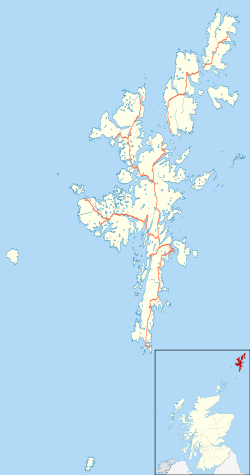| North Roe | |
|---|---|
 Muckle Ayre at North Roe | |
Location within Shetland | |
| OS grid reference | HU364896 |
| Civil parish | |
| Council area | |
| Lieutenancy area | |
| Country | Scotland |
| Sovereign state | United Kingdom |
| Post town | SHETLAND |
| Postcode district | ZE2 9 |
| Dialling code | 01806 |
| Police | Scotland |
| Fire | Scottish |
| Ambulance | Scottish |
| UK Parliament | |
| Scottish Parliament | |
| Official name | Ronas Hill - North Roe & Tingon |
| Designated | 11 August 1997 |
| Reference no. | 916 [1] |
North Roe is a village, and protected area at the northern tip in the large Northmavine peninsula of the Mainland of Shetland, Scotland. It is a small village, with a school with fewer than a dozen pupils in 2011. [2] The village is served by the A970 road which runs the length of the Shetland mainland from south to north and is a single-carriageway for the final nine miles.
